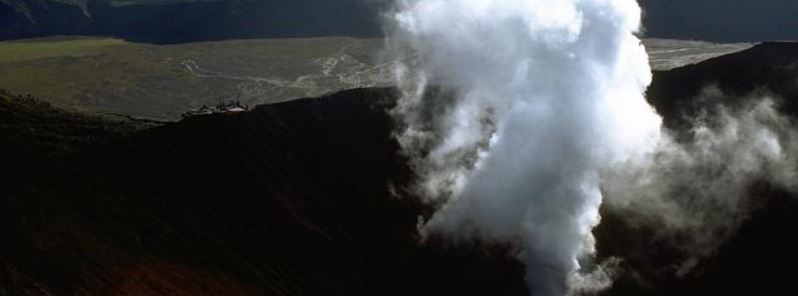Increased unrest recorded at Bromo volcano, Tengger caldera, Indonesia

A phase of increased unrest has started at Tengger caldera's Bromo cone, East Java, Indonesia, one of Java's most active and most frequently visited volcanoes. The last known eruption of this volcano occurred in 2012.
On November 1, the local volcano observatory issued a warning not to approach Bromo within 1 km (0.62 miles) radius, as changes in seismic activity and increased steaming/degassing (including sulfur dioxide) had been noted, Volcano Discovery reports.
The alert status of the volcano remains at 2 (waspada/watch) on a scale of 1 – 4.
The last time this volcano appeared in GVP's weekly volcanic report was during the week of July 22 – 28, 2015:
PVMBG reported that during March 1 – July 13, 2015 white plumes from Tengger caldera's Bromo cone rose as high as 100 m (328 feet) above the crater, and a sulfur dioxide odor was periodically noted at the Bromo observation post. Seismicity was dominated by tremor, but also included volcanic earthquakes. The Alert Level remained at 2 (on a scale of 1-4). Residents and visitors were warned not to approach the crater within a radius of 1 km.
Geological background
The 16-km-wide Tengger caldera is located at the northern end of a volcanic massif extending from Semeru volcano. The massive volcanic complex dates back to about 820,000 years ago and consists of five overlapping stratovolcanoes, each truncated by a caldera. Lava domes, pyroclastic cones, and a maar occupy the flanks of the massif. The Ngadisari caldera at the NE end of the complex formed about 150,000 years ago and is now drained through the Sapikerep valley.
The most recent of the calderas is the 9 x 10 km wide Sandsea caldera at the SW end of the complex, which formed incrementally during the late Pleistocene and early Holocene. An overlapping cluster of post-caldera cones was constructed on the floor of the Sandsea caldera within the past several thousand years. The youngest of these is Bromo, one of Java's most active and most frequently visited volcanoes.
Featured image: Steam rising from Mt. Bromo. Photo by Lee Siebert, 1995 (Smithsonian Institution).

Commenting rules and guidelines
We value the thoughts and opinions of our readers and welcome healthy discussions on our website. In order to maintain a respectful and positive community, we ask that all commenters follow these rules.